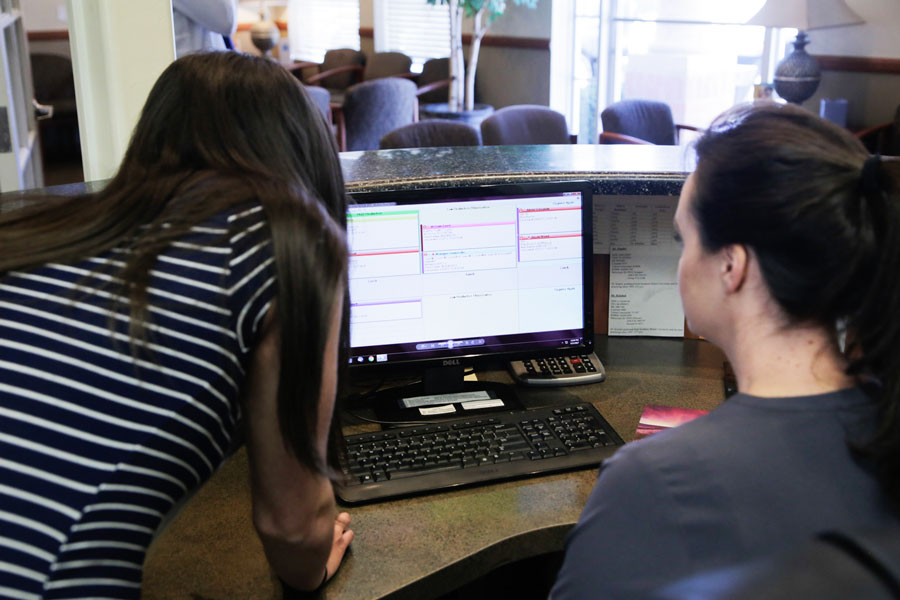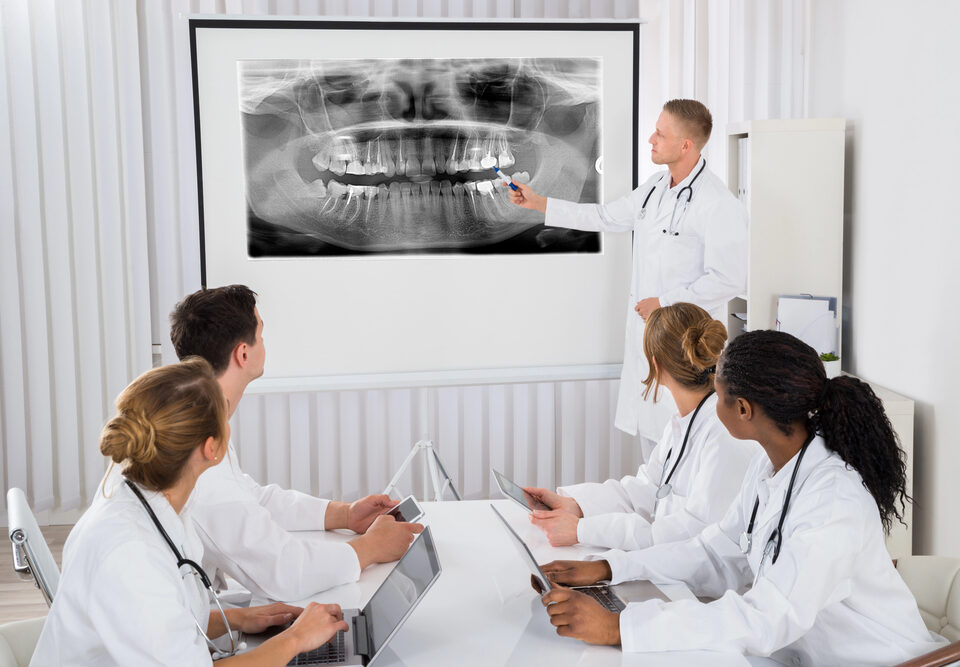Good denta software helps a dental practice coordinate tasks and plan their workflow. Learn why planning with software more than a bunch of flashing icons and keys.
Integrating the Right Software in Your Office
In the practice, as with all other professions, a day is filled with countless tasks that are essential for the optimum running of the business. That’s where integrated software comes in.
The tasks are of both complex and simple nature depending on their individual purpose. These tasks vary greatly in the area of specialization. The dental professional is mainly concerned with tasks specific to the profession such as:
- Assessments of patient cases
- Factoring in a patient’s medical history when determining viable treatment options
- Assessing the probability of long-term success for all viable treatments
- Choosing the appropriate treatment
- Coming with the procedures for the treatment to be used
- Carrying out the actual treatment procedure
- Prescribing medication to easy post-treatment recovery
- Dealing with complications that may arise from a medical procedure
While the list is not exhaustive, it only looks at the tasks which the dental professional is fully competent in handling.
Planning with Software for Staff Tasks
Other tasks integral to the dental practice are therefore carried out by additional support staff.
These include the following:
- Setting up patient appointments
- Creating and updating patient files with information on treatment procedures and drug prescriptions
- Carrying out post-treatment therapy and refilling prescriptions
- Handling cases of cancellation and postponement of appointments
- Evaluating patient health insurance cover provisions
- Handling and tracking patient payments
- Maintaining healthy customer relations
- Handling patient queries
- Running and updating the dental practice’s website
- Updating financial records from information relating to receivables, expenses, liabilities, assets and so forth.
Using Dental Software in Your Practice
The most notable aspect with the above incomplete list of day to day tasks is that they require different areas of specialization. This means for a dental practice to run efficiently it would require at least a nurse, an accountant, and an IT expert. However, this is not always possible especially for new dental practices and practices with multiple branches.
What helps any new practice, or an established practice? The right personnel is key. Experience is vital as is training. A good location and good marketing also matter. However, for the day to day running of the practice, you need a little more. Namely, you need something like dental practice integration software.
If you have multiple branches of a dental practice, you may wish to get dental practice management software to connect all of your offices.

Where Dental Practice Management Software Comes In
Good dental practice software has a web interface and cloud-based data.
This offers a notable advantage over native DPMS software in terms of the necessary storage and processing infrastructure, scalability and deployment.
In order to use a cloud-based DPMS system, all that is needed is an internet enabled computer. Some cloud-based DPMS systems have iOS and Android which means they can run on mobile devices such as tablets and smartphones. The greatest advantage of cloud-based DPMS lies in the fact that all the data stored remotely on external servers. This means the information on the DPMS can be accessed and edited from any location.
The second greatest advantage is easy of scaling up the system as a dental practice expands its customer base. Instant synchronization of data is particularly beneficial for practices with several branches. A cloud-based DPMS system not only allows a dental practice with a minimum staff of offer efficient service to its customers but also gives the practice access to additional services. These services include marketing, on-demand analysis and reporting on business operation, digital imaging and customer support.
Dental Software System Features
When you’re picking dental software, it is the features that should sell you.
Scheduling
Normal features include a scheduler which handles appointments as well as cancellation and postponement. Another common feature is digital imaging which includes periodontal and clinical imaging. All the DPMS systems feature substantial word processing capabilities which can include the creation of PDF documents. Patient file management is yet another key feature with all information pertaining to a particular patient instantly accessible from a single file.
Time Clock
For dental practices that have a small to medium sized support staff will benefit from an employee time clock feature that is offered in most of the DPMS systems. This feature monitors employee work schedules. Most of the above systems also offer accurate on-demand reporting on the operations of the practice ranging from a breakdown of treatments offered treatment with a specified time period to an analysis of revenue flow for the desired time period.
Payment Processing
A payment processing feature helps online payments, track patient payment histories, and notify the user of due payments. The ADSTRA dental software suite offers a marketing feature through the dental industry affiliates such as the ADA website. Cloud-based dental practice software systems are indeed an integral part of the dental health care industry.







